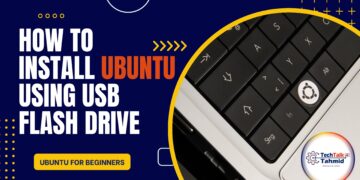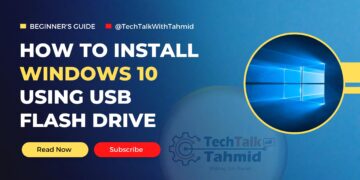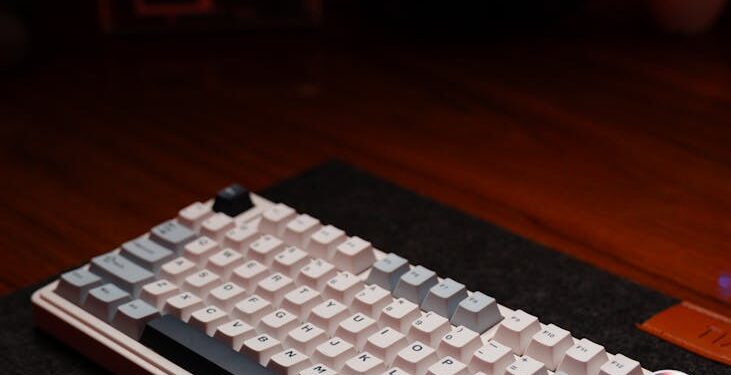In the vibrant and rapidly evolving digital landscape of Bangladesh, aspiring IT professionals face a crucial need for practical, hands-on experience. While formal education provides a strong theoretical foundation, the true mastery of IT skills comes from direct engagement with real-world systems. This is where the concept of a home lab server becomes invaluable. For young IT minds eager to transcend theoretical knowledge and dive deep into networking, server administration, virtualization, and cloud technologies, setting up a personal lab is a game-changer. This article will guide you through the essential components, various setup options, and the immense learning potential that a home lab offers, tailored specifically for the context of young enthusiasts in Bangladesh, empowering them to unleash their full potential.
The power of a home lab: Building practical skills in Bangladesh
For many young IT enthusiasts in Bangladesh, access to enterprise-grade infrastructure can be limited. Universities might offer labs, but individual, continuous experimentation is often restricted. This is precisely why a home lab serves as an unparalleled learning environment. It’s your personal playground to break things, fix them, and truly understand how IT systems function without the fear of impacting a production environment. Imagine having a dedicated space to build your own virtual networks, deploy servers, experiment with different operating systems, or even host your own applications. This hands-on experience is critical for developing problem-solving skills, debugging expertise, and a deep understanding of IT operations – qualities highly sought after by employers in Bangladesh’s competitive tech job market. A home lab allows you to bridge the gap between classroom theory and practical application, making you a more competent and confident IT professional.
Essential components for your foundational lab
Building your first home lab doesn’t require a massive budget, especially when you consider repurposing existing hardware or opting for cost-effective solutions available in Bangladesh. The core components typically fall into two categories: hardware and software.
Hardware:
- Compute Unit: This is the heart of your lab.
- Repurposed Desktop/Laptop: An older PC with an Intel Core i5 (4th Gen or newer) or equivalent AMD processor, and at least 8GB of RAM, can be an excellent starting point.
- Small Form Factor (SFF) PCs: Used HP Elitedesk or Dell Optiplex machines are popular, powerful yet compact options, often available affordably.
- Mini-PCs/NUC Clones: Compact and low-power, ideal for lighter workloads or as dedicated single-purpose servers.
- Raspberry Pi: While not a traditional server, multiple Raspberry Pis can form a low-power cluster for learning Kubernetes or distributed applications.
- Storage: Crucial for operating systems and virtual machine files.
- SSD (Solid State Drive): Essential for the operating system and critical VMs due to speed.
- HDD (Hard Disk Drive): More cost-effective for bulk data storage or less performance-critical VMs.
- RAM (Random Access Memory): The more RAM, the more virtual machines you can run concurrently. Aim for at least 16GB, with 32GB or more being ideal for serious virtualization.
- Networking:
- Router: Your existing home router might suffice initially, but consider one with good NAT and port forwarding capabilities.
- Managed/Unmanaged Switch: For creating separate network segments or connecting multiple lab devices.
- Ethernet Cables: Various lengths for connecting your devices.
Software:
- Hypervisor: Software that allows you to run multiple virtual machines on a single physical machine.
- Proxmox VE: A popular open-source choice, robust and feature-rich.
- VMware ESXi (Free Tier): A professional-grade option with a free license for basic use.
- Oracle VirtualBox: Excellent for desktop virtualization and experimenting on your main PC.
- Operating Systems:
- Linux Distributions: Ubuntu Server, Debian, CentOS – essential for server administration.
- Windows Server (Evaluation): Microsoft offers free evaluation versions for learning Active Directory, PowerShell, etc.
- Services & Tools: Docker, Kubernetes (e.g., K3s), Apache/Nginx (web servers), MySQL/PostgreSQL (databases), Git, VPN software, monitoring tools like Prometheus and Grafana.
To give you a clearer picture, here’s a comparison of common hardware choices:
| Hardware Type | Pros | Cons | Typical Cost (BDT, used) |
|---|---|---|---|
| Repurposed Desktop/Laptop | Very low cost (often free), easy to start. | Higher power consumption, larger footprint, limited expansion. | 0 – 15,000 |
| Small Form Factor (SFF) PC | Good balance of power, compact size, relatively low power. | Limited full-size expansion slots, some noise. | 15,000 – 35,000 |
| Raspberry Pi (4GB/8GB) | Extremely low power, tiny, silent, great for specific projects. | Limited CPU power for heavy virtualization, ARM architecture. | 5,000 – 10,000 |
Sample lab setups for ascending ambitions
Your home lab can evolve as your skills and budget grow. Here are a few progressive setup ideas:
The budget starter: Linux & containers fundamentals
This setup is perfect for absolute beginners with minimal investment.
- Hardware: A repurposed old desktop or laptop (Intel Core i3/i5, 8GB RAM, 250GB SSD).
- Software: Install Ubuntu Server as the primary operating system.
- Projects:
- Learn basic Linux commands and file system navigation.
- Set up a simple web server (Apache/Nginx).
- Install Docker and deploy a few containers (e.g., WordPress, Pi-hole).
- Experiment with network services like DNS or DHCP on Linux.
- Learning Focus: Command-line proficiency, basic networking, containerization basics.
The aspiring sysadmin/network engineer: Virtualization & server roles
Stepping up, this setup allows for more complex environments and professional-grade learning.
- Hardware: A used SFF PC (Intel Core i5 6th Gen+, 16-32GB RAM, 250GB SSD + 1TB HDD).
- Software: Install Proxmox VE as the hypervisor. Create multiple virtual machines:
- Windows Server (for Active Directory, DNS, DHCP).
- Two or three Linux VMs (for web servers, databases, or application hosting).
- A virtual firewall/router like pfSense or OPNsense to learn network segmentation.
- Projects:
- Configure an Active Directory domain, user accounts, and group policies.
- Set up network subnets and VLANs within your virtual environment.
- Implement firewall rules for different network segments.
- Automate tasks using scripting (Bash, PowerShell).
- Monitor your VMs’ performance using Proxmox tools.
- Learning Focus: Virtualization management, Windows Server administration, advanced Linux server roles, network security, and infrastructure as code principles.
The cloud native explorer: Kubernetes & distributed systems
For those interested in DevOps, cloud engineering, and modern application deployment.
- Hardware: A more powerful SFF PC or Mini-PC (Intel Core i7 8th Gen+, 32GB+ RAM, 500GB NVMe SSD). For a true cluster, consider multiple Raspberry Pi 4s or even multiple mini-PCs.
- Software: Proxmox VE (if using one powerful machine) or bare-metal Linux. Deploy a Kubernetes cluster (e.g., K3s for lightweight setups, or a full Kubeadm cluster).
- Projects:
- Deploy microservices applications to your Kubernetes cluster.
- Set up a CI/CD pipeline using Jenkins or GitLab CI.
- Experiment with distributed storage solutions like Ceph (on Proxmox).
- Learn about service meshes (e.g., Istio) and container networking.
- Integrate monitoring tools like Prometheus and Grafana for your cluster.
- Learning Focus: Container orchestration, microservices architecture, CI/CD, cloud-native patterns, distributed system management.
Maximizing your learning journey: Beyond the setup
Setting up your home lab is just the first step; the real learning begins with consistent experimentation and targeted projects. Don’t be afraid to break things – that’s how you learn to fix them! Document every step, every configuration, and every error. This habit will be invaluable in your professional career. Join online communities such as Reddit’s r/homelab or local Bangladeshi tech forums to ask questions, share your progress, and get inspiration. YouTube channels and blogs dedicated to home labs and IT infrastructure are also excellent resources. Consider tackling projects that directly relate to real-world scenarios: setting up a media server, hosting your own blog, building a network-wide ad blocker (Pi-hole), or even creating a small Active Directory environment with multiple users and groups. The continuous cycle of planning, implementing, troubleshooting, and refining will solidify your understanding and prepare you for the challenges and opportunities in the dynamic IT industry of Bangladesh.
Embracing the journey of building a home lab is one of the most impactful decisions a young IT enthusiast in Bangladesh can make for their career. It’s an investment not just in hardware and software, but in invaluable practical experience that no textbook or online course can fully replicate. From mastering basic Linux commands on a repurposed desktop to orchestrating complex container deployments on a dedicated server, each step in your home lab journey builds a tangible skill set. This hands-on expertise directly addresses the demands of the modern IT job market, making you a highly competitive candidate. So, gather your components, choose your first project, and dive in. The world of IT is vast and constantly evolving, and your home lab will be your personal launchpad, empowering you to explore, innovate, and ultimately unleash your full potential in Bangladesh’s thriving tech ecosystem. Start building today and transform your aspirations into tangible achievements.



















